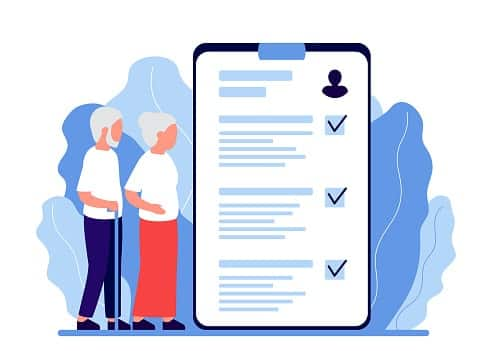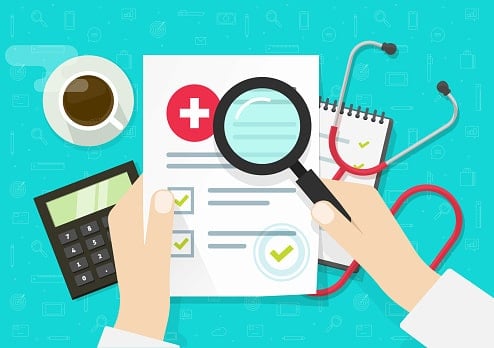- Types of New York health insurance
- Best health insurance in New York
- No individual mandate in New York
- Health insurance subsidies in New York
- How much is health insurance in New York?
- How to buy health insurance in New York
- COBRA insurance in New York
- Young adult dependent coverage extension in New York
- Other ways to get health insurance in New York
Types of New York health insurance
The Affordable Care Act marketplace divides plans into four health insurance tiers based on premiums and out-of-pocket costs. Premiums are what you pay monthly to have a health plan and out-of-pocket costs are what you pay when you need care.
| Premiums | Out-of-pocket costs | Single deductible | Out-of-pocket maximum | |
|---|---|---|---|---|
| Bronze | Lowest premiums | Insurer pays 60% of health care costs | $8,700 | $9,450 |
| Silver | Higher than Bronze, but lower than other tiers | Insurer pays 70% of health care costs | $2,100 | $9,450 |
| Gold | Higher than Silver, but lower than Platinum | Insurer pays 80% of health care costs | $600 | $5,900 |
| Platinum | Highest premiums | Insurer pays 90% of health care costs | $0 | $2,000 |
Source: State of New York
Note: The figures above don't take into account ACA subsidies.
Which level is best for you depends on your financial situation and whether you’d rather pay higher premiums or out-of-pocket costs.
Who may benefit from a Bronze plan:
- People who want the lowest premiums.
- Young, healthy people who don’t expect to need many healthcare services over the next year can save money with a Bronze plan.
Who may benefit from a Silver plan:
- People who want low premiums but don’t want costly out-of-pocket costs.
- Those who qualify for additional subsidies that are found in Silver plans.
Who may benefit from a Gold plan:
- People who would rather pay higher premiums with lower out-of-pocket costs when they need care.
- New Yorkers who think they’ll need many health care services over the next year.
Who may benefit from a Platinum plan:
- Those who expect to need many health care services.
- People who want to pay the lowest out-of-pocket costs while paying more premiums upfront.
You’ll also want to compare plans by benefit design. A benefit design decides whether you need referrals to see specialists and can receive out-of-network care.
Two common plan designs are health maintenance organization (HMO) and preferred provider organization (PPO). HMOs are usually much cheaper health insurance, but those savings are coupled with more restrictions than a PPO. For instance, an HMO usually requires choosing a primary care physician and getting a referral to see a specialist. HMOs also don’t pay for out-of-network care.
PPOs usually don’t require a primary care provider or referrals to see specialists. PPOs also let you get out-of-network care but at a higher cost than in-network care.
A third kind of plan is an exclusive provider (EPO) plan. EPOs are a hybrid between HMOs and PPOs. An EPO doesn’t require referrals to see specialists, but you must stay within your network.
When comparing plans, make sure to check that your providers are considered in-network. If not, you could wind up paying more or all of those costs depending on your health plan.
Find out more about the differences between health plans.
Best health insurance in New York
Fifteen health insurance plans offer individual ACA marketplace plans in New York:
- Ambetter from Fidelis Care
- Anthem BlueCross
- Anthem BlueCross BlueShield
- CDPHP
- Emblem Health
- Excellus
- Healthfirst
- Highmark of Northeastern NY
- Highmark of Western NY
- Independent Health
- MetroPlus Health Plan
- MVP Health Care
- Oscar
- UnitedHealthcare
- Univera
Most counties offer at least four health plans. However, there are a handful of areas with fewer options. Check out New York health insurers by county.
The marketplace also provides stand-alone dental plans provided by:
- Anthem BlueCross BlueShield of Western New York
- Anthem BlueShield of Northeastern New York
- Delta Dental
- Excellus BlueCross BlueShield
- Guardian
- Solstice Health Insurance
- Univera Healthcare
Delta Dental offers plans in every county. The other plans provide dental plans in select counties. Similar to health plans, check plans’ provider networks when comparing options to make sure your dental providers accept the plan.
Check out available dental insurance companies by county.
No individual mandate in New York
New Yorkers aren’t required to have health insurance. The ACA previously required that most Americans have health insurance, but Congress has since eliminated the tax penalty.
A handful of states, including New Jersey, Massachusetts and Vermont, have implemented their own individual mandate, but the Empire State doesn’t require health insurance.
Even though you don’t need health insurance in New York, it’s still a good idea to explore costs and see if you can get some coverage. Without it, you may end up paying thousands of dollars in medical bills if you’re in an accident.
Health insurance subsidies in New York
New Yorkers can save money on ACA marketplace plans through subsidies and tax credits. As of 2024, the calculation works on a sliding scale.
If your income is 250% of the federal poverty level (FPL), you will only pay up to 4% of your household income toward healthcare premiums. The 250% FPL benchmark in 2024 is $36,450 for an individual and $75,000 for a family of four.
If your FPL is 400% or higher, you pay no more than 8% of your household income on healthcare premiums. In 2024, 400% FPL is $58,320 for an individual or $120,000 for a family of four.
The New York marketplace website provides plan cost estimates when you enter your household income and family size. These subsidies are only for people with an ACA plan. People with other types of health insurance aren’t eligible.
How much is health insurance in New York?
Health insurance costs depend on the plan type, benefit design, insurer, number of people covered and where you live.
Here are the monthly average lowest-cost plan premiums by tier in New York for 2024:
- Bronze: $562
- Silver: $719
- Gold: $911
Source: Kaiser Family Foundation
The averages don’t take into ACA plan subsidies. You can find plans for less money if you qualify for subsidies.
How to buy health insurance in New York
During open enrollment, you can get a new plan or change plans on the exchange.
You may also be eligible to get a plan during other times of the year if you qualify for a special enrollment period.
In New York, you may be eligible for a special enrollment period if you experience one of these major life events:
- Lost your job
- Lost health insurance
- Moved
- Became pregnant
- Turned 26 and not eligible to stay on parents’ plan
- Married or entered into a domestic partnership
- New child
- Divorce or legal separation
- Becoming a citizen, national or lawfully present individual
If the state agrees that you’re eligible for a special enrollment period, you have 60 days to get a plan or make changes to your current plan. You can find out if you’re eligible by going to the New York marketplace website.
COBRA insurance in New York
If you lose your job, you can extend the employer’s health insurance coverage for a limited period through COBRA.
The federal COBRA program covers people who recently worked at a business with at least 20 employees. In New York, COBRA lets former employees keep their coverage for up to 36 months.
New York also has a mini-COBRA law for employers with fewer than 20 employees. Former employees of those companies can keep their coverage via COBRA for up to 36 months.
There are benefits to COBRA. You get to keep the same coverage, you don’t have to worry about learning about a new plan and you know that your providers accept the insurance.
There’s one major catch, though. COBRA is expensive. Your former employer won’t help you pay premiums, so you have to pick up the entire tab plus up to a 2% administrative fee.
Young adult dependent coverage extension in New York
Children who turn 26 typically are no longer eligible to stay on their parent’s plan. However, New York allows parents to extend that coverage until the age of 29.
The state law is meant to help young adults who don’t have access to their own employer-sponsored health insurance. Children until the age of 29 can get coverage on a parent’s employer’s plan through two options:
- Young adult option: Employees or their eligible children can select this option and pay an additional premium, which must be within 100% of the plan’s single premium rate. This option allows an adult child to stay on a parent’s health insurance until 29 without paying for COBRA coverage, which is more expensive.
- Make available option: This coverage happens when an employer allows parents to extend coverage for children under standard family coverage until the age of 29.
Check with your employer to find out more about these options.
Other ways to get health insurance in New York
Most New Yorkers who aren’t eligible for Medicare or Medicaid get health insurance through their employer. Employer-sponsored health insurance is usually the most affordable health insurance option, too.
However, besides an employer or the ACA marketplace, there are other ways to get health insurance coverage:
- An individual health plan outside of the ACA marketplace. These plans provide additional options to ones found on the marketplace, but they aren’t eligible for subsidies. If you qualify for subsidies, you may stay with an ACA marketplace plan.
- Catastrophic health insurance is available to people under 30 and those eligible for a hardship exemption. Catastrophic health plans have low premiums and provide similar coverage found in a standard health plan. However, these plans also have high out-of-pocket costs. Catastrophic plans can have individual deductibles up to $9,450 in New York. In 2024, catastrophic plans have the same out-of-pocket maximum as the Bronze tier plan, but a much higher deductible.
Some states allow short-term health insurance plans, but New York forbids those types of plans.
Still not sure about health insurance eligibility? Check out Insurance.com’s Health Plan Finder tool to explore your health insurance eligibility.
Sources:
- New York State of Health. ”Press Release: NY State of Health Releases 2023 Health Insurance Update.” Accessed April 2024.
- New York State of Health. “2024 QUALIFIED HEALTH PLAN AND ESSENTIAL PLAN LINE UP.” Accessed April 2024.
- New York State of Health. “2024 Individual Market Dental Product Issuers by County.” Accessed April 2024.
- KFF. “Explaining Health Care Reform: Questions About Health Insurance Subsidies.” Accessed April 2024.
- KFF. “Average Marketplace Premiums by Metal Tier, 2018-2024.” Accessed April 2024.
- New York State of Heath. “Special Enrollment Periods.” Accessed April 2024.
- New York State Department of Financial Services."COBRA, Age 29 and Continued Coverage Information.” Accessed April 2024.




